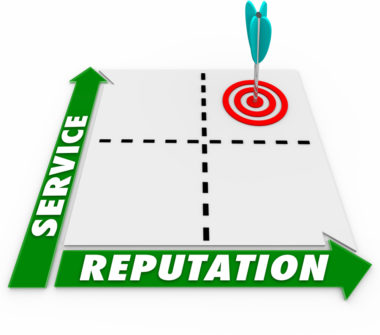There are many reasons that you may have an unwanted item on your credit report. Foreclosures, tax liens, repossessions, and collection claims can all show up on a report if you fail to come through on your financial obligations.
When a derogatory mark appears on your report, unless you make an effort to have the mark removed beforehand, it typically sticks around for seven years — something referred to as the “Seven Year Rule.” Over time, the negative item impacts your credit less and less until, after seven years, it automatically drops off your report.
At least, that’s what usually happens.
However, mistakes and errors can take place, and there are some occasions when, even after seven years, an item won’t be removed from your report. When this happens, you must take steps to proactively get the troublesome mark off of your report for good. Here are seven steps to help you do so.
Table of Contents
1. Confirm the Age of Your Debt
The first thing you want to do is confirm that the debt is, indeed, over seven years old. If it’s still on a report, it probably means the credit bureau that generated that report considers the debt not to be seven years old yet, and it’s up to you to prove the true age of the item.
The age of a debt most often begins when the account first becomes delinquent. In other words, if a debt is sold off to a collection agency or re-aged, it shouldn’t change when the seven-year period began.
If the item is something more cut and clear, such as a bankruptcy or other court ruling, it’s even easier, as you can simply measure from the time that the decision was legally made.
2. Look at All of Your Credit Reports
If you find an item that is over seven years old on one of your credit reports, that doesn’t mean the issue is universal. On the contrary, all three of the credit bureaus work with their own information, and each of their reports can vary in multiple ways.
Get your free annual copy of your credit reports from all three bureaus and review them. As you do so, check to see whether the debt is consistently sticking around on all of them.
Chances are, if the debt is over seven years old, it won’t be on all three. If that’s the case, you can then target your item removal efforts toward the specific bureaus with the inconsistency.
3. Contact the Credit Bureaus
Once you’ve identified that the age of your debt is past the seven-year mark and you know which credit bureau or bureaus hasn’t removed the item yet, it’s time to take action. The first step is to contact the bureaus themselves.
Look up the address for each bureau that you need to contact. Then let them know about the lingering item. It’s recommended that you draft a formal dispute letter to send them via snail mail. Make sure to include any documentation or other proof that the item is overdue for removal. Also, keep a copy of everything for yourself.
A formal letter allows you to certify its delivery. It also provides a paper trail that you can follow, which is always a good idea when dealing with money matters.
4. Reach Out to the Lender
Writing a dispute letter to a credit bureau is the best way to deal with the issue directly at the source. After all, the bureau is the one that is continuing to report the item on your credit reports after the seven years have expired.
However, if you want to increase your odds of resolving the issue quickly, peacefully, and with minimal headaches, you can also send a letter to the lender of the loan. Keep in mind that you should contact the financial institution or collection agency that is currently reporting the delinquent account.
By reaching out to the lender, you can explain to them directly that the item has remained on your report past the point when it should have been removed. You’re essentially repackaging the information from your dispute letter into a financial hardship letter.
Rather than boldly disputing incorrect information to the bureau, though, in this case, you’re humbly requesting their help in getting the item removed. While it isn’t foolproof, trying to get the lender to chime in on the situation can be an effective strategy in streamlining the removal process.
5. Escalate Your Contact Attempts
You must temper your expectations as you go about reaching out to credit bureaus and lenders.
Remember, even in the case of a smaller collection agency, you’re still working with an organization that is likely dealing with hundreds and even thousands of different accounts. In the case of a larger credit bureau, they’re managing credit reports for tens of millions of individuals.
If your initial communication is met with silence, you can begin to escalate your attempts to get an answer. Give the organizations a reasonable amount of time to respond to your message.
The Fair Credit Reporting Act typically allows 30 days for them to respond to the message after it’s been received — which is another reason why you should send it by certified mail to confirm said receipt.
From there, you can send a follow-up letter. This should include a copy of the original letter as well as the proof of the item needing to be removed.
Try to keep your tone neutral and professional, as you don’t want to stir up negative emotions. Also, keep in mind that if you’re writing to the lender, you can address the letter to someone higher up in the company in hopes of getting a better response.
6. Send a Letter to the Regulator
If you find that your pleas to have the item removed from your report have fallen on deaf ears, you can elevate your efforts even further by reaching out to a federal regulator. Banks, credit card companies, and other lenders are subject to various levels of government regulation.
If lenders and credit bureaus aren’t responding, you can reach out to the federal regulator most closely connected to the organization that you’re dealing with. As always, look for a physical mail-in option so that you can maintain that paper trail.
Keep in mind that this should always be a worst-case scenario activity. You should also have clear evidence in hand (via the copies of your formal disputes and hardship letters) that you’ve tried to resolve the issue on your own.
7. Get Help
Finally, it’s always important to consider if and when you should seek professional help. Credit repair companies are no stranger to dealing with credit bureaus and financial institutions.
They also will have deep knowledge surrounding everything from questions about the statute of limitation for a debt to how to contact a federal regulator. A good organization can help you navigate through the sticky process of getting incorrect items removed from your report so that you can repair your credit.
If you find that you’re dealing with a more serious level of neglect or a profound failure of communication, you may need to get legal counsel, as well. Once again, this should only be considered as a final option if you cannot solve the problem in any other way.
Image Source: https://depositphotos.com/





